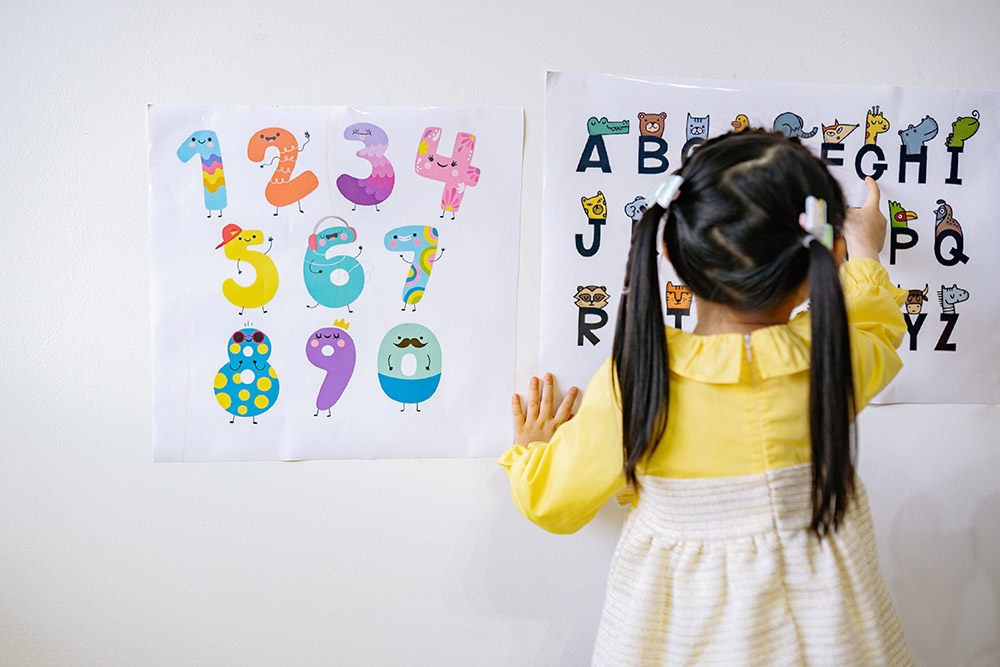If your child shows difficulties with speech sounds, you may have heard terms like “speech sound disorders,” “articulation disorder,” or “phonological disorder.”
But sometimes, this terminology can be confusing, especially when your goal is to ensure you get the right help for your child.
In this article, we discuss speech sound disorders, signs of difficulties, and how a speech-language assessment can help your child get the diagnosis and treatment they need.
What are speech sound disorders?
As young children grow, speech sounds develop predictably. For instance, most children can correctly say almost all speech sounds by age 6, although there may be a few errors with sounds like ‘r’ or ‘th.’ By age 8, children should be able to say all sounds without error and be easily understood, even by strangers.
Children with trouble pronouncing certain sounds or who are difficult to understand compared to their peers or expected developmental milestones may have a speech sound disorder.
Speech sound disorder is a broad term that encompasses different difficulties with aspects of speech sounds, such as problems with motor production, perception, phonological representation of sounds, or rules governing speech sound sequences.
Articulation disorder and phonological disorder are specific types of speech sound disorders. These terms help you, your child, and professionals better understand the specific difficulty your child is having and what treatment strategies can help. However, there also can be multiple problems occurring that may involve a combination of articulation and phonological problems.
Articulation disorder: Definition and signs
Articulation involves how a person uses their mouth’s muscles (tongue, lips), teeth, and jaw to create sounds.
Articulation disorders involve errors or difficulties in saying individual speech sounds, sometimes referred to as difficulties at the motor or phonetic level. These errors occur past the age when the sound is typically learned. Some examples of articulation speech sound errors include dropping, distorting, substituting, or adding sounds. These errors are not due to a dialect or accent.
Some examples or signs of articulation errors include:
- Replacing one sound with another sound in words, such as using “f” for “th” sounds (e.g., teef for teeth); or “w” for “r” sounds (e.g., wed for red).
- Producing a sound in an unfamiliar manner (e.g., lateralized lisp, where “s” sounds slushy).
Phonological disorder: Definition and signs
Phonology encompasses the patterns involved when sounds are put together to create words.
Phonological disorders involve errors in the patterns or rules that often impact more than one sound. These issues often make it hard for people to understand what the child is saying. While these errors can occur in young children who are learning speech skills, it may be a disorder if it persists beyond expected developmental milestones.
Some examples or signs of phonological errors include:
- Leaving the final consonant sounds off of words (e.g., toe for toad, or ba for bat).
- Substituting the sounds made at the back of your mouth (e.g., “g,” “k”) with sounds made at the front of your mouth (e.g., “d,” “t”). Examples include: doe for go; tat for cat.
What causes a speech sound disorder?
There can be multiple reasons a child, teen, or adult has a speech sound disorder.
Sometimes, it’s due to a neurological, structural, or sensory-perceptual cause, often referred to as an organic speech sound disorder. This could be something a person is born with, or they could have an injury, like a head injury or stroke, that causes the problem.
Organic speech sound disorders may occur if your child has:
- Hearing loss
- Physical conditions that impact speech, like cleft palate
- A genetic condition like Down syndrome
- A trauma, like a head injury or stroke
Sometimes, the reason or cause isn’t known, which may be called a functional speech sound disorder.
You might also hear the terms “dysarthria” or “apraxia” mentioned in discussions about speech sound disorders. Dysarthria refers to speech problems because the muscles used to make speech sounds are weak. Apraxia refers to speech problems due to the brain having difficulty sending messages to the speech muscles, resulting in issues with when and how to move.
Will my child outgrow a speech sound disorder?
A child with mild speech sound issues or who is slightly lagging behind typical milestones may not need speech-language therapy. However, most children diagnosed with an articulation or phonological disorder will need speech therapy. Without help, the speech sound problems can persist into their teen and adult years.
Why is a speech-language assessment important when identifying an articulation versus phonological disorder?
Identifying the specific issues contributing to your child’s speech sound difficulties is essential so they get the right treatment, support, and assistance. Because the treatment strategies for problems with articulation are different from those used for phonological issues.
Speech-language assessment can help with:
- Diagnosis
- Identifying the specific types of speech sound difficulties your child is having
- Developing a treatment plan and recommendations to overcome the issues
- Providing documentation to support access to resources and accommodations in the school system
- Identifying your child’s speech and language strengths
What is a speech-language assessment?
A speech-language assessment is performed by a speech-language pathologist (SLP). A comprehensive speech-language evaluation will help assess your child’s speech, language, and communication skills.
Assessments are typically tailored to the specific referral question or child’s situation and may involve both standardized and nonstandardized tasks. The speech-language evaluation may involve:
- Watching and listening to your child speak to see how well their speech can be understood
- Listening for sound errors
- Observing how your child moves their jaw, lips, and tongue
- Using standardized assessment tools to evaluate spoken and written language skills, like being able to name objects when shown pictures
What is the treatment for a speech sound disorder?
The specific treatment strategies and approaches will vary depending on your child’s specific difficulties and strengths. The results of the hearing evaluation done by a medical doctor and the speech-language assessment will help determine what strategies will best help your child.
A certified speech-language pathologist typically conducts the therapy for articulation or phonological disorders. The SLP will develop your child’s therapy based on their needs. The SLP will explain to you and your child what to expect, what the treatment will involve, the frequency of sessions, and answer any questions you have. They may also provide activities for your child to practice at home between sessions.
Speech-language therapy can help with a variety of issues, including:
- Articulation delays
- Phonological awareness delays
- Motor-speech disorders
- Stuttering
- Language delays
At North Shore Psychological Services, our certified SLP works one-on-one with your child or teen so your child stays engaged and has fun as they develop the necessary skills.
When to seek help for a possible speech sound disorder
Speech sound disorders typically don’t go away on their own but can get better with proper diagnosis and therapy.
These issues can get harder to correct when a person is older. So, getting help for an articulation or phonological disorder is important to do as early as possible.
If you’re concerned about your child’s speech, talk to your family doctor or school about scheduling an evaluation with a speech-language professional.
At North Shore Psychological Services, our certified speech-language pathologist provides comprehensive speech-language assessments and speech therapy to help your child get the necessary support and treatments. Contact us to learn more.





